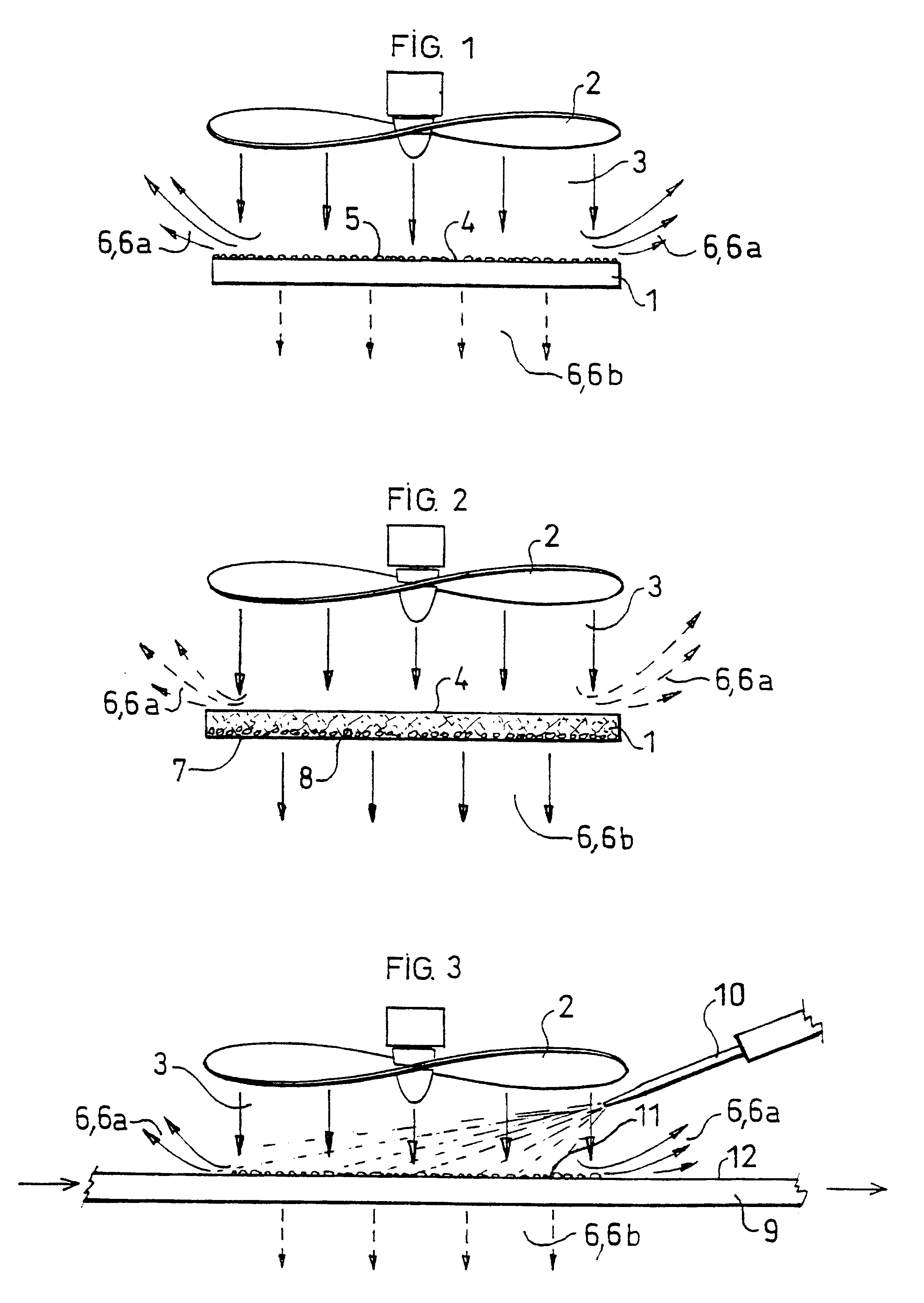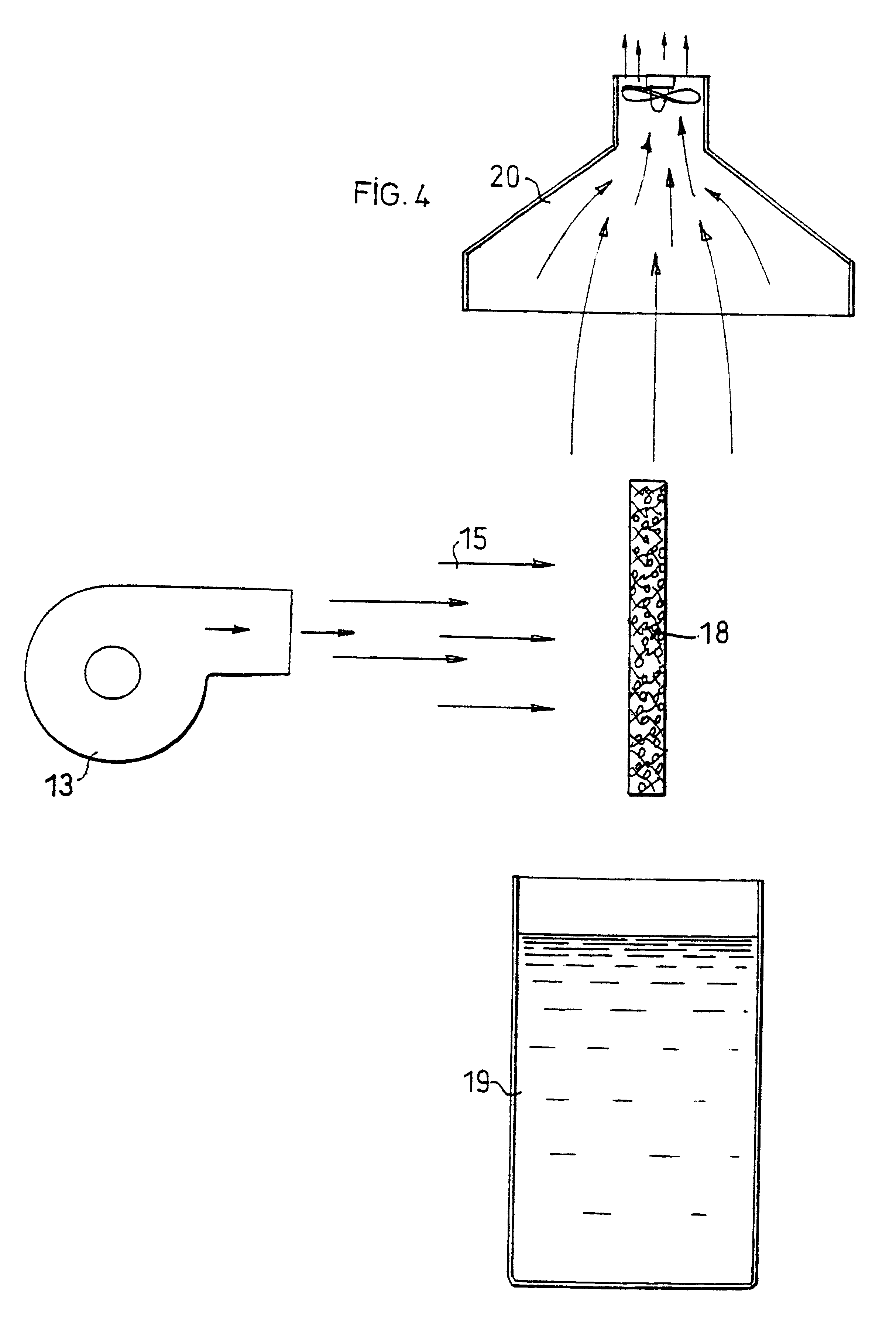Method for treating a solid material to make it hydrophobic, material obtained and uses
- Summary
- Abstract
- Description
- Claims
- Application Information
AI Technical Summary
Benefits of technology
Problems solved by technology
Method used
Image
Examples
example 2
A 10 cm square piece of Whatman n.sup.o 2 filter paper was impregnated with a 0.4% (weight / volume) solution of stearic acid chloride in pentane. After evaporating the pentane, two untreated squares of paper, identical to the first, were placed above a sintered glass under which a slight vacuum was maintained. The paper which had been impregnated with the reagent was placed on these two pieces placed one on the other, and a stream of hot air was passed through the three thicknesses for a few seconds. It was found that the three squares had become hydrophobic although the one which was completely underneath had had no direct contact with the one above it. This experiment demonstrated that acylation was indeed achieved by diffusion of the reagent, associated with entrainment by the gas stream.
example 3
The experiment of example 2 was repeated ten times in succession with three paper circles having the same diameter as the sintered glass and the sample which was never in contact with the reagent was weighed between each experiment. The results obtained were as follows:
Initial weight of the paper sample(after dehydration): 0.816 g,
Quantity of stearic acid chloride used in each cycle: 20 mg.
The increase found in the weight was very low, less than 0.6%, and did not increase with the number of acylations. This experiment demonstrated that grafting of a fatty acid in the gaseous phase only required a small quantity of reagent in order to form derivatives of all the available sites. It was moreover found that formation of derivatives was quantitative from the first acylation cycle.
example 6
A drop of a 0.5% (weight / volume) stearic acid chloride solution in pentane was deposited on a sheet of filter paper. The limit reached by the solvent on the sheet before it evaporated was marked with a pencil. The sheet was then placed in a ventilated oven at 150.degree. C. for 15 seconds and tested for its hydrophobic character. A hydrophobic zone was found having a diameter twice as great as that reached by the solvent.
In another experiment, a stream of hot air coming from a hair drier was directed for a few seconds at the zone on which the drop had been deposited, while keeping it at an oblique angle. A hydrophobic trail was noted in the direction of the stream of hot air.
This example demonstrated the existence of reagent diffusion phenomena which were associated with entrainment by the gas current.
PUM
| Property | Measurement | Unit |
|---|---|---|
| Fraction | aaaaa | aaaaa |
| Angle | aaaaa | aaaaa |
| Mass | aaaaa | aaaaa |
Abstract
Description
Claims
Application Information
 Login to View More
Login to View More - R&D
- Intellectual Property
- Life Sciences
- Materials
- Tech Scout
- Unparalleled Data Quality
- Higher Quality Content
- 60% Fewer Hallucinations
Browse by: Latest US Patents, China's latest patents, Technical Efficacy Thesaurus, Application Domain, Technology Topic, Popular Technical Reports.
© 2025 PatSnap. All rights reserved.Legal|Privacy policy|Modern Slavery Act Transparency Statement|Sitemap|About US| Contact US: help@patsnap.com



